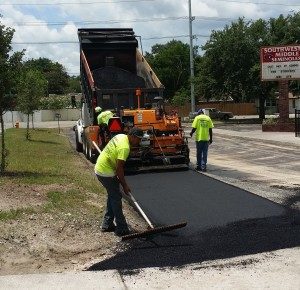A1 Professional Asphalt & Sealing Llc - The Facts
A1 Professional Asphalt & Sealing Llc - The Facts
Blog Article
The smart Trick of A1 Professional Asphalt & Sealing Llc That Nobody is Discussing
Table of ContentsA1 Professional Asphalt & Sealing Llc for BeginnersThe Best Guide To A1 Professional Asphalt & Sealing Llc8 Easy Facts About A1 Professional Asphalt & Sealing Llc DescribedUnknown Facts About A1 Professional Asphalt & Sealing LlcLittle Known Facts About A1 Professional Asphalt & Sealing Llc.

The oil in a cars and truck engine is not simply oil. The REOB consists of all the ingredients that were in the waste oil as well as the wear steels from the engine (mostly iron and copper).
However, by making many blends making use of various REOB samples and various asphalt binders, the variations mostly can be balanced out. Numerous States gave examples of recognized REOB make-up to TFHRC researchers, who assessed the samples to compare the percent of added (recognized) REOB to the located (checked) amount. The evaluations revealed an equivalent percentage of included and discovered REOB.
Not known Factual Statements About A1 Professional Asphalt & Sealing Llc
None of those States understood that the asphalt they were buying included REOB. One State urged its examples had no REOB - https://disqus.com/by/disqus_4YBmBsXG7m/about/.
Of the 1,532 samples checked, 12 percent included REOB, and some had substantially high levels of it at 1020 percent. The greatest level was 34 percent in a sample from Texas, which TxDOT had used in a patching compound. This testing also disclosed the existence of phosphoric acid in 11 percent of the samples, and 2 percent consisted of ground tire rubber.
2 years back at TRB's annual conference, the Federal researchers held an REOB workshop and offered the findings of their research laboratory evaluations to a standing room-only crowd. Some companies do not particularly ban REOB, they do impose physical examinations that preclude its useeffectively a restriction. Others do not prohibit it by spec, but have contracts with asphalt distributors to prevent using REOB
Examine This Report on A1 Professional Asphalt & Sealing Llc
A handful do allow REOB, some within certain limits. As an example, Ohio and Texas limitation levels to less than 5 percent of the asphalt. To develop a dependable you can check here test technique that all States can make use of, the TFHRC scientists established a round-robin test plan. The individuals are 11 State freeway companies (Illinois, Massachusetts, Minnesota, Mississippi, Montana, North Carolina, Oklahoma, South Carolina, Texas, Vermont, and Wyoming), 2 independent testing laboratories, the Ministry of Transportation in Ontario, Queen's University in Ontario, and an Ontario paving specialist.
In overall, the researchers prepared and delivered 720 blends. The individuals are examining the samples individually making use of the standards provided by the TFHRC researchers. The round-robin testing is nearly finished, and TFHRC is in the procedure of gathering the results. The output will be a proposed AASHTO examination approach that any type of State can embrace and make use of (diagonal parking vs straight parking).
The pavement with REOB, which is situated 0.6 mile (1 kilometer) from the sidewalk without REOB, has similar subgrade, traffic thickness, and climate. However, the segment of Highway655 with 5 to 10 percent REOB showed considerable cracking. In this example, the presence of REOB was the identified reason of splitting at a reduced temperatures.
"In our experience in Canada, also small quantities of 23 percent can be a trouble." A section of test pavement in Minnesota (MN1-4) located to consist of REOB likewise fractured too soon. The pavement carried out well for the first 3 to 4 years, but after that started to fracture. This pavement is additionally based on reduced temperatures.
Examine This Report on A1 Professional Asphalt & Sealing Llc
The examinations were not extensive, yet they showed that at degrees of 6 percent or even more, the tensile toughness of the asphalt went down substantially. At a degree of 3.5 percent REOB, the variation in the physical test methods was more than the result of REOB. It was difficult for researchers to assess whether REOB was present. https://a1asphaltseal.bandcamp.com/album/a1-professional-asphalt-sealing-llc.

One binder specification thought about is the difference in between the low temperature important specification temperature for rigidity (S) in the bending beam rheometer and the flexing beam of light rheometer creep incline (m-value) noted as Tcritical. Two independent research study teams, one from AASHTO and the various other from the Asphalt Institute, ended that even more study is required on the use of REOB in asphalt.
Formerly, all asphalt screening determined design residential properties such as stiffness. These tests do not show what products had actually been included to the asphalt.

Getting The A1 Professional Asphalt & Sealing Llc To Work
These results demonstrate there are weaknesses in the standardized design screening methods that might be made use of. The manufacturer might have an economic advantage and the product passes all the standard tests, but the item might not be helpful to guaranteeing long-lasting efficiency. To address this problem and the development of new asphalt ingredients and extenders, TFHRC is starting a research study program to use handheld spectroscopic tools, x-ray fluorescence spectroscopy, and Fourier transform infrared spectroscopy to allow analyses to be done in the area instead than needing to take samples back to the laboratory.
Report this page